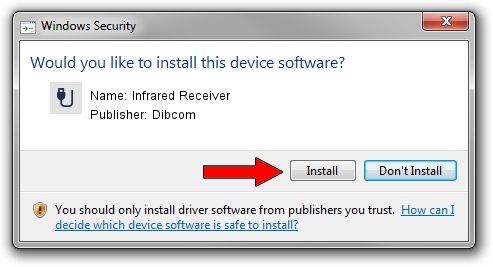Dibcom Input Devices Driver
If for character devices system calls go directly to device drivers, in case of block devices, the drivers do not work directly with system calls. In the case of block devices, communication between the user-space and the block device driver is mediated by the file management subsystem and the block device subsystem. Audio Output Device Driver free download - Audio Output Switcher, Conexant Audio Driver, Driver Booster, and many more programs. Device/driver settings. Find the IR receiver's device by looking in the dmesg output for a line similar to: input: IR-receiver inside an USB DVB receiver as /class/input/input4. Additionally, the IR receiver will be listed if you execute the command: cat /proc/bus/input/devices For example. Hi Rats, Let’s manually rename the Software Distribution folder, then restart the computer. Exit all open programs. Click on Start, type “cmd” (without quotes) in the search bar, and then right click on cmd and chose the option “Run as administrator” from the options to open the command prompt in an elevated mode. Jan 28, 2017 Thanks for the info, however, I had already tried everything. The apple device driver was never on my computer, however, I was able to install it after installing a program called 'Driver Update' for some reason when I downloaded the 'Apple mobile device driver' it did not install, but after downloading the driver update program, there was no problem and the file installed without a hitch.
In order to manually update your driver, follow the steps below (the next steps):
1. Extract the .cab file to a folder of your choice
2. Go to Device Manager (right click on My Computer, choose Manage and then find Device Manager in the left panel), or right click on Start Menu for Windows 10 and select Device Manager
3. Right click on the hardware device you wish to update and choose Update Driver Software
4. Choose to select the location of the new driver manually and browse to the folder where you extracted the driver
5. If you already have the driver installed and want to update to a newer version got to 'Let me pick from a list of device drivers on my computer'
6. Click 'Have Disk'
7. Browse to the folder where you extracted the driver and click Ok

About Device Driver:
If you install this package, your device will be properly recognized by compatible systems, and might even benefit from new features or various bug fixes.
Please note that, even though other operating systems might also be compatible, we do not recommend you apply any software on platforms other than the specified ones. Doing so might cause the installation to crash, which could even render the device unusable.
When it comes to installing the package, the steps should not be much of a hassle because each manufacturer tries to make them as easy as possible; usually, you must make check for compatibility, get the package, run the available setup, and follow the instructions displayed on-screen.
However, due to the large number of devices out there and the various ways for applying these packages, it would be best if you refer to the installation manual first, to be sure of a successful update.
That being said, click the download button, and apply the present software on your product. Also constantly check with our website to stay up to speed with latest releases.
It is highly recommended to always use the most recent driver version available.
Try to set a system restore point before installing a device driver. This will help if you installed an incorrect or mismatched driver. Problems can arise when your hardware device is too old or not supported any longer.

- COMPATIBLE WITH:
- Windows 10
Windows 10 64 bit - file size:
- 33 KB
- filename:
- 200006403_ea8630ab3a876846072487ae1524f21c0e7f9f62.cab
- CATEGORY:
- Other Drivers & Tools
 -->
-->This topic describes the device-specific registry entries.
Find device information after it enumerates on Windows
Dibcom Input Devices Driver Vga
View the device interface GUID, Hardware Id, and device class information about your device
Find this registry key and note the DeviceInstance value:
HKEY_LOCAL_MACHINESYSTEMCurrentControlSetControlDeviceClasses
Find the device instance registry key and get the device interface GUID:
HKEY_LOCAL_MACHINESYSTEMCurrentControlSetEnumUSB<hardware id><instance id>Device Parameters
Under the device instance key, note the device class, subclass, and protocol codes:
HKEY_LOCAL_MACHINESYSTEMCurrentControlSetEnumUSB
Registry settings for configuring USB driver stack behavior
The registry entries described in this topic are found under this key:
In the vvvvpppprrrrr key,
- vvvv is a 4-digit hexadecimal number that identifies the vendor
- pppp is a 4-digit hexadecimal number that identifies the product
- rrrr is a 4-digit hexadecimal number that contains the revision number of the device.
The vendor ID, product ID, and revision number values are obtained from the USB device descriptor.The following table describes the possible registry entries for the vvvvpppprrrrr key. The USB driver stack considers these entries as read-only values.
| Registry entry | Description | Possible values |
|---|---|---|
osvc REG_BINARY Supported on Windows XP and later versions. | Indicates whether the operating system queried the device for Microsoft-Defined USB Descriptors. If the previously-attempted OS descriptor query was successful, the value contains the vendor code from the OS string descriptor. |
|
IgnoreHWSerNum REG_BINARY Supported on Windows Vista and later versions. | Indicates whether the USB driver stack must ignore the serial number of the device. |
|
ResetOnResume REG_BINARY Supported on Windows Vista and later versions. | Indicates whether the USB driver stack must reset the device when the port resumes from a sleep cycle. |
|

Dibcom Input Devices Driver Device
Related topics
